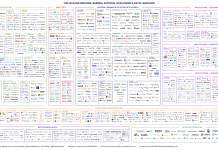In today’s world of technology and innovation, ensuring the success of product, service, and enterprise systems demands a structured approach
This is where Systems Engineering (SE) plays a pivotal role. At its core, SE is an interdisciplinary method that navigates the entire lifecycle of systems, from inception and design to operation, maintenance, and eventual disposal.
What is Service System Engineering?
Service systems engineering (SSE) is the application of systems engineering principles and concepts in the development, delivery, operation, and life cycle management of service systems. The key focus of SSE is on the transactions between a service provider and service consumers. The consumer can be an individual, an organization, or even an entire enterprise.
The Systems Engineering Body of Knowledge (SEBoK) serves as a comprehensive guide, compiling essential knowledge and best practices from various disciplines.
Unlike a static textbook, SEBoK is a dynamic resource continually updated with community input and the latest insights from the SE community. It doesn’t aim to be an exhaustive compendium but, instead, a reference to existing literature, ensuring relevance and reliability.
Using SEBoK
SEBoK introduces newcomers to the fundamentals of SE, placing it within historical contexts and highlighting its economic significance. This foundational section sets the stage for deeper dives into topics such as Systems of Systems, Agile Life Cycle approaches, and Model-Based Systems Engineering (MBSE), all crucial components of modern SE practice.
Implanted in fundamental systems sciences, SE integrates management and engineering principles to optimise processes across diverse fields. While traditionally applied in product development, SE principles are equally applicable to service industries and complex enterprise systems. This versatility highlights SE’s collaborative nature, requiring expertise at both individual and team levels and, as well as structured governance at the organisational level.











